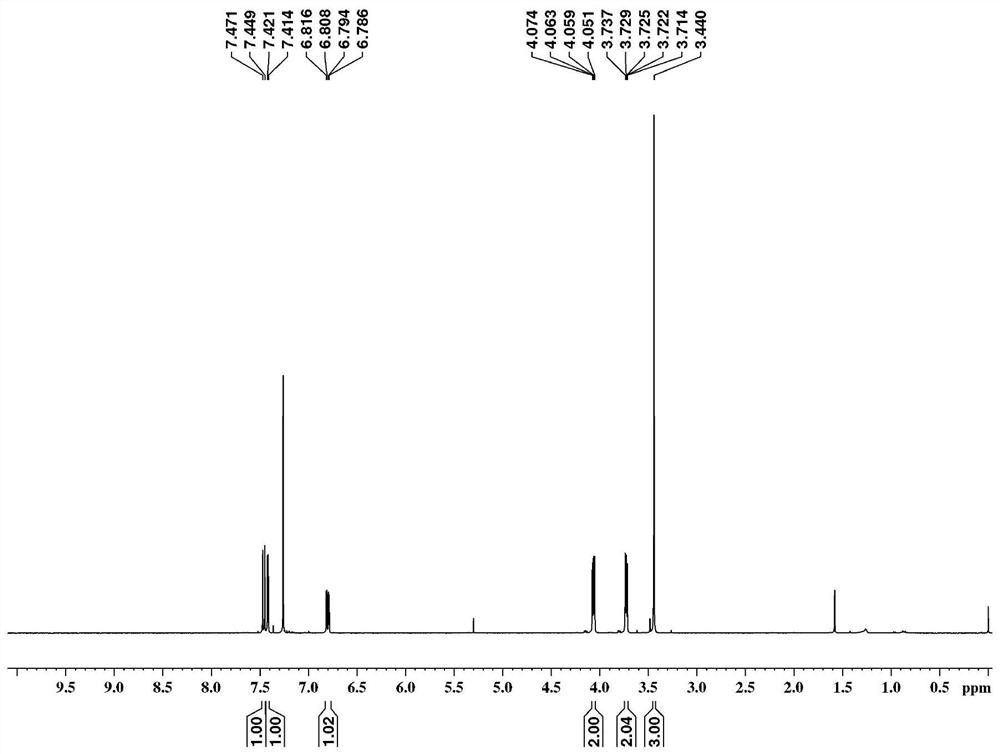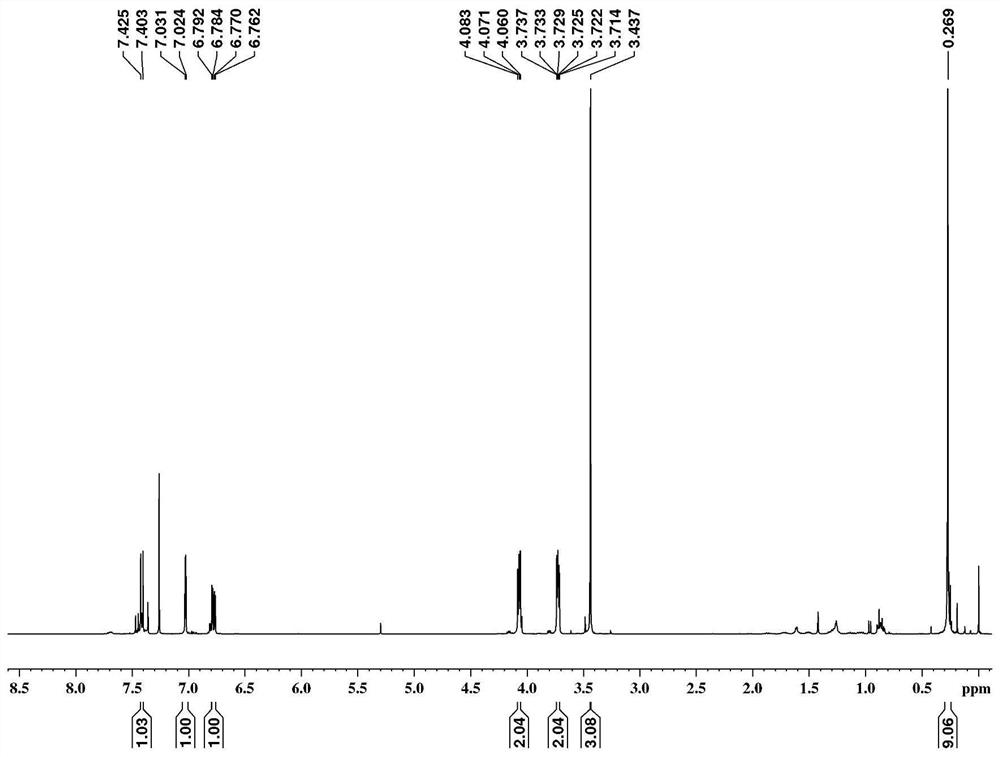Fluorescent polymer for detecting trace gas-phase explosives, and preparation and application of film
A technology of polymers and explosives, applied in the field of fluorescent polymers, can solve the problems that cannot further meet the requirements of fast, sensitive, and high selectivity of fluorescent sensors, and achieve the enhancement of monomer fluorescence intensity, suppression of fluorescence quenching, and enhanced Effect of Electron Cloud Density
- Summary
- Abstract
- Description
- Claims
- Application Information
AI Technical Summary
Problems solved by technology
Method used
Image
Examples
Embodiment 1
[0074] This embodiment provides an intermediate 1-10, the synthesis route of which is as follows:
[0075]
[0076] The preparation method of monomer 1-10 specifically comprises the following steps:
[0077] 1) Synthesis of compound 1-1
[0078] Put 3-iodophenol (2.00g, 9.10mmol), 2-bromoethylmethyl ether (2.53g, 18.20mmol) and potassium carbonate (5.02g, 36.40mmol) into a Schlenk reaction flask, add acetonitrile (30mL) , heated to 80°C and stirred for 16 hours; after the reaction, the reaction mixture was filtered under vacuum using a Buchner funnel, and the filtrate was concentrated in a rotary evaporator to obtain a crude product, which was separated and purified by silica gel column chromatography, and the eluent used was It was a mixed solvent of dichloromethane and petroleum ether at a volume ratio of 1:1, and compound 1-1 (2.50 g, 99%) was finally obtained as a colorless oil. The H NMR spectrum of compound 1-1 is as follows figure 1 shown.
[0079] 2) Synthesis ...
Embodiment 2
[0098] This embodiment provides a fluorescent polymer (polymer 1) for detecting trace gas-phase explosives, and the synthesis route of polymer 1 is as follows:
[0099]
[0100] The preparation method of polymer 1 specifically comprises the following steps:
[0101] Under nitrogen atmosphere, compound 1-10 (0.043g, 0.042mmol), 1,4-diethynylbenzene P2 (0.005g, 0.042mmol), catalyst Pd(PPh 3 ) 4 (0.005g, 0.042mmol) and cuprous iodide CuI (0.002g, 0.010mmol) were placed in a Schlenk reaction flask, nitrogen was pumped out three times with a double row tube, and ultra-dry toluene (8mL) treated with potassium-sodium alloy was added and isopropylamine (i-Pr 2 NH) (2 mL), heated to 110 ° C and stirred for 36 h. After the reaction, the reaction mixture cooled to room temperature was poured into deionized water, extracted five times with dichloromethane, and the organic layers were combined and dried with anhydrous sodium sulfate. Use a rotary evaporator to concentrate the organic...
Embodiment 3
[0103] This embodiment provides a fluorescent polymer (polymer 2) for detecting trace gas-phase explosives, and the synthesis route of polymer 2 is as follows:
[0104]
[0105] The preparation method of polymer 2 specifically comprises the following steps:
[0106] Under nitrogen atmosphere, compound 1-10 (0.043g, 0.042mmol), P4 (0.011g, 0.042mmol), catalyst Pd (PPh 3 ) 4 (0.005g, 0.043mmol) and cuprous iodide CuI (0.002g, 0.010mmol) were placed in a Schlenk reaction flask, nitrogen was pumped out three times with a double row tube, and ultra-dry toluene (8mL) treated with potassium-sodium alloy was added and isopropylamine (i-Pr 2 NH) (2 mL), heated to 110 ° C and stirred for 36 h. After the reaction, the reaction mixture cooled to room temperature was poured into deionized water, extracted five times with dichloromethane, and the organic layers were combined and dried with anhydrous sodium sulfate. Use a rotary evaporator to concentrate the organic layer under vacuum ...
PUM
 Login to View More
Login to View More Abstract
Description
Claims
Application Information
 Login to View More
Login to View More - R&D
- Intellectual Property
- Life Sciences
- Materials
- Tech Scout
- Unparalleled Data Quality
- Higher Quality Content
- 60% Fewer Hallucinations
Browse by: Latest US Patents, China's latest patents, Technical Efficacy Thesaurus, Application Domain, Technology Topic, Popular Technical Reports.
© 2025 PatSnap. All rights reserved.Legal|Privacy policy|Modern Slavery Act Transparency Statement|Sitemap|About US| Contact US: help@patsnap.com



